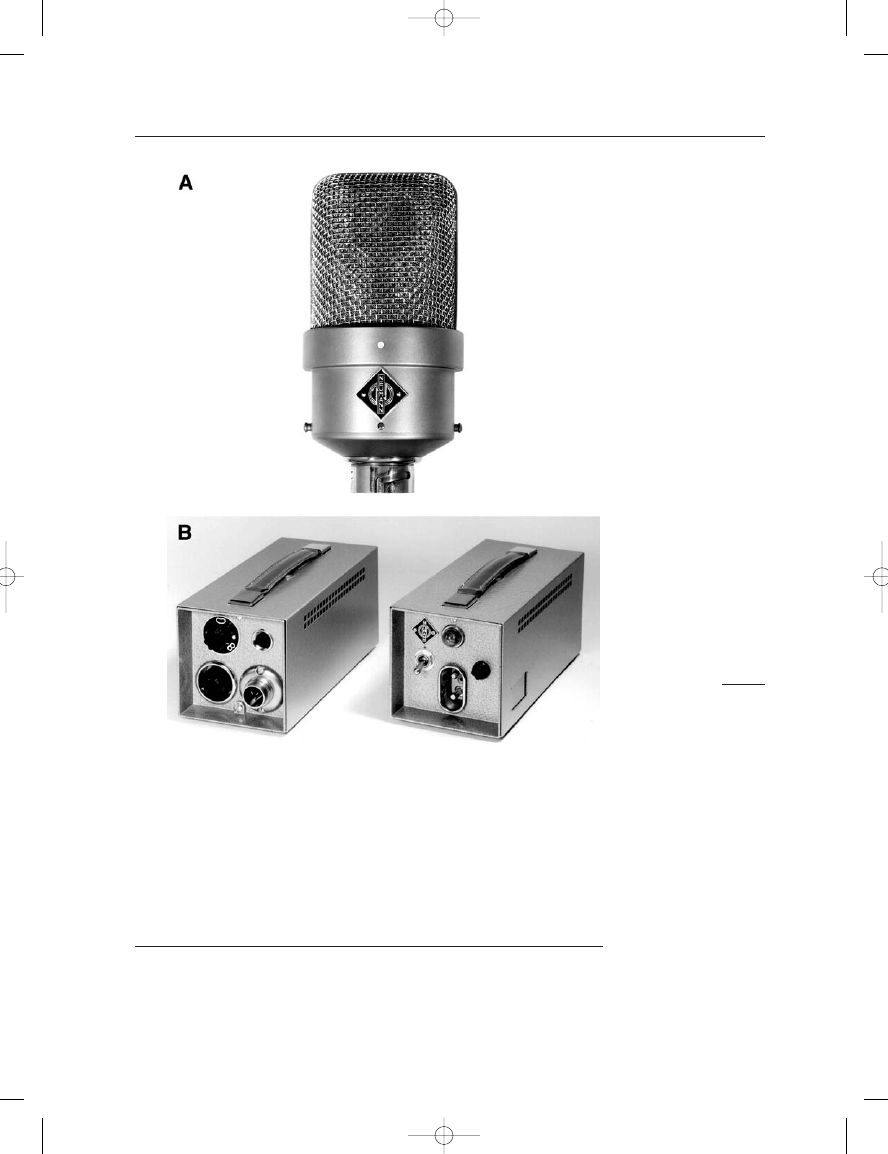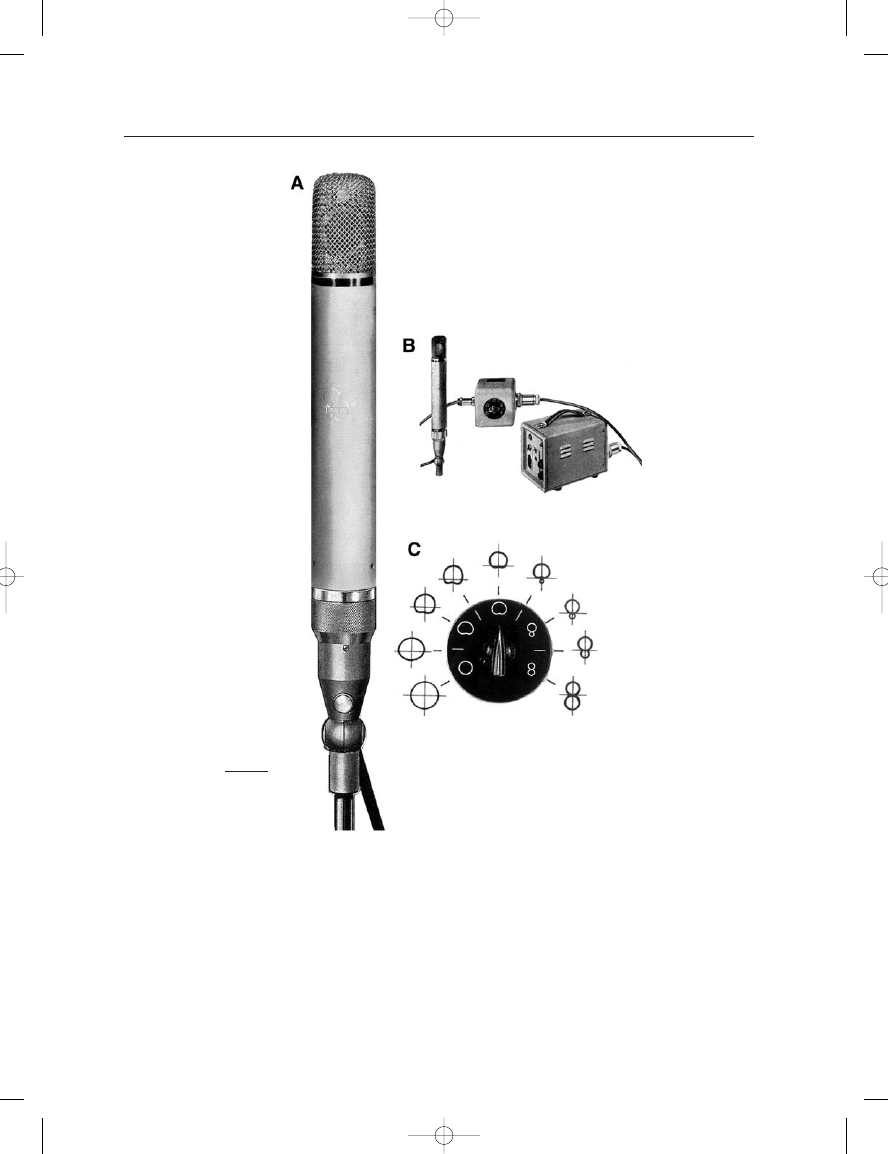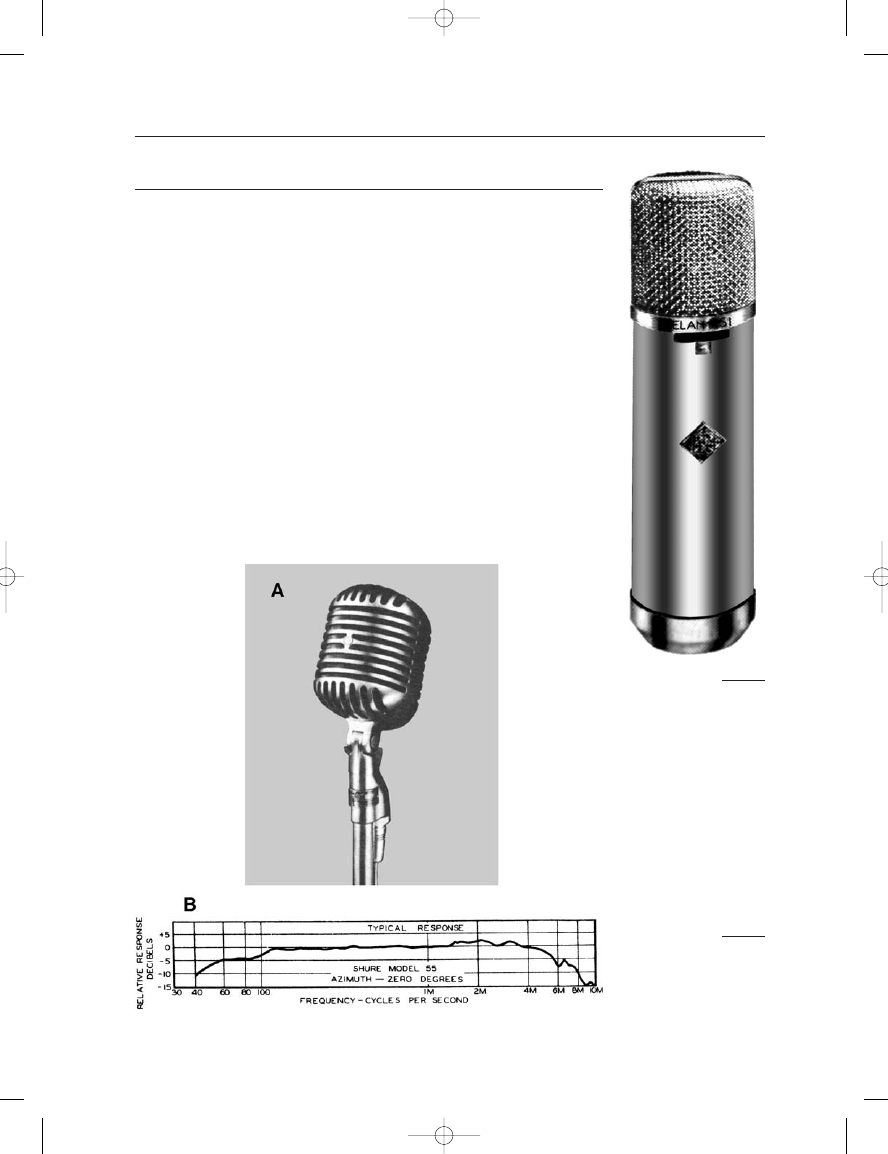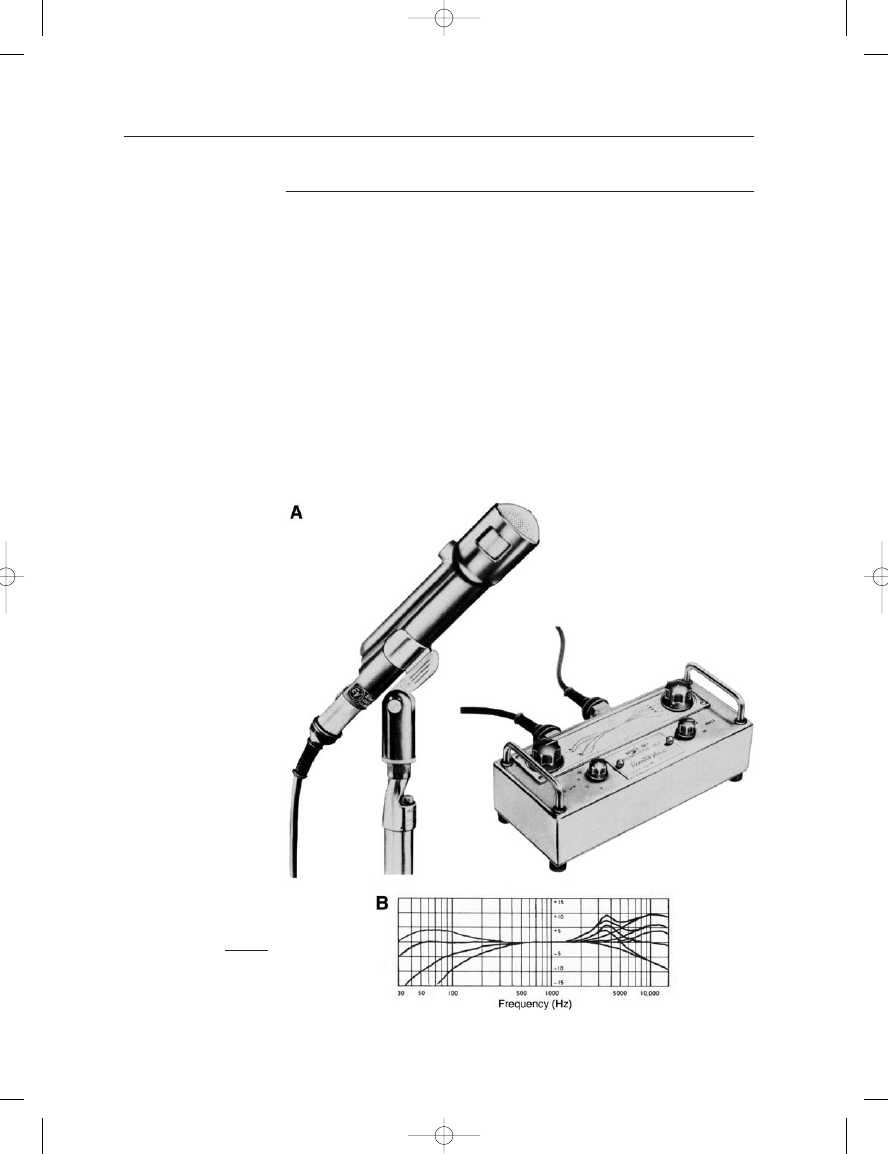ВУЗ: Казахская Национальная Академия Искусств им. Т. Жургенова
Категория: Книга
Дисциплина: Не указана
Добавлен: 03.02.2019
Просмотров: 17240
Скачиваний: 51

C-12 capacitor model, which was introduced in 1953, are shown in
Figure 21–11. Electrical pattern switching was facilitated by the unique
dual backplate capsule design used by AKG. Note the pattern switching
unit, which is in line with the microphone and the power supply (detail
shown at C). Switching was noiseless and could be carried out during
recording. The C-12 is highly sought after today for studio work, most
notably for pop vocals.
TELEFUNKEN ELAM 251
When Neumann took over its own foreign distribution, Telefunken
turned to AKG for replacement models and in 1959 contracted for what
became the ELAM 251. The basic elements in this model were the same
THE MICROPHONE BOOK
348
FIGURE 21–10
Neumann Models M49/50.
(Photos courtesy of
Neumann/USA.)
Earg_21.qxd 14/9/04 3:07 PM Page 348

21: Classic Microphones: The Author’s View
349
as in the C-12; however, the in-line pattern changing box was incorpo-
rated as a three-way switch on the microphone body. In the overall
redesign process the microphone body was made somewhat larger. The
ELAM 251 remains today one of the most prized, and expensive, vintage
tube microphones items in any studio.
Those readers interested in more technical details of the C12 and
ELAM 251 designs are referred to Paul (1989) and Webb (1997).
FIGURE 21–11
AKG Model C12. (Data
courtesy of AKG
Acoustics.)
Earg_21.qxd 14/9/04 3:07 PM Page 349

SHURE MODEL M-55 UNIDYNE
Introduced in the late 1930s, the Shure M-55 Unidyne was the first
dynamic microphone with a cardioid pattern. It became the industry pro-
totype for all dynamic vocal microphones both in the US and in Europe.
It was invented by the ever-resourceful Benjamin Bauer, who reasoned
that a good cardioid pattern should exist somewhere between omni and
dipole. His simple solution was to introduce a two-element acoustical
phase shift network instead of a fixed delay path in one branch of a basic
dipole. The time constant of the phase shift network provided excellent
front-back rejection over a broad portion of the midrange, while forward
directionality provided the necessary front-back discrimination at higher
frequencies. The M-55 is shown in Figure 21–13A, and on-axis response
is shown at B.
The M-55 has been in the Shure catalog in one form or another since
its inception in the late 1930s. It is truly one of the icons of the industry
and has been documented in press and news activities over the years.
Who can forget those photos of Elvis Presley and President Kennedy
with the ubiquitous M-55?
THE MICROPHONE BOOK
350
FIGURE 21–12
Telefunken Model
ELAM 251. (Data
from early company
advertising.)
FIGURE 21–13
Shure Model M-55:
photo (A); typical on-axis
response (B). (Data
courtesy of Shure Inc.)
Earg_21.qxd 14/9/04 3:07 PM Page 350

21: Classic Microphones: The Author’s View
351
ELECTRO-VOICE MODEL 666 VARIABLE-D
®
Wiggins (1954) designed the Variable-DD
®
dynamic cardioid at Electro-
Voice. Up to that time, all dynamic cardioid designs had a single rear open-
ing and a mass-controlled diaphragm in order to maintain flat, extended
LF response. The penalty paid here is handling noise and susceptibility to
mechanical shock. By stiffening the diaphragm and providing three rear
openings (low, medium, and high frequency), each of a different length,
the net forces on the diaphragm remain as before, and the response is effec-
tively flat. (Design details are given in Chapter 5 under The Electro-Voice
Variable-D
®
Dynamic Microphone.)
The model 666 is shown in Figure 21–14A. That microphone, in
combination with the equalizer shown at B, comprise the Model 667
system. In addition to normal speech applications, Electro-Voice recom-
mended the 666 for more distant sound stage applications, inasmuch
as the microphone had good noise immunity. The electronics package
FIGURE 21–14
Electro-Voice Model
666/667. (Data courtesy of
Electro-Voice.)
Earg_21.qxd 14/9/04 3:08 PM Page 351

provided added gain and a family of EQ curves to correct for various
distance effects. Details of the EQ contours are shown at C.
ELECTRO-VOICE MODEL 643 RIFLE MICROPHONE
Over the years, rifle microphones have rarely exceeded about 0.5 m (20 in)
in length, but in the late 1950s Electro-Voice designed the largest com-
mercial model ever, the 643, which measured 2.2 m (86 in). The model
was designed for coverage of sports events and other large venue activi-
ties in an era long before wireless microphones were commonplace. The
microphone is shown in Figure 21–15A, and polar response curves are
shown at B. While the 643 did a remarkable job at moderate distances,
ambient noise, much of it at middle and low frequencies, took its toll on
intelligibility. Additionally, the microphone was expensive and clumsy to
set up and operate. With the coming of wireless microphones the distant
coverage challenges could be far more easily met.
AKG ACOUSTICS MODEL D-12
The D-12 dynamic cardioid microphone was introduced in 1952 and with
some modifications remained in the AKG catalog until 1985. It was notable
THE MICROPHONE BOOK
352
FIGURE 21–15
Electro-Voice Model 643
rifle microphone. (Data
from Tremaine, 1969 and
company advertising.)
Earg_21.qxd 14/9/04 3:08 PM Page 352